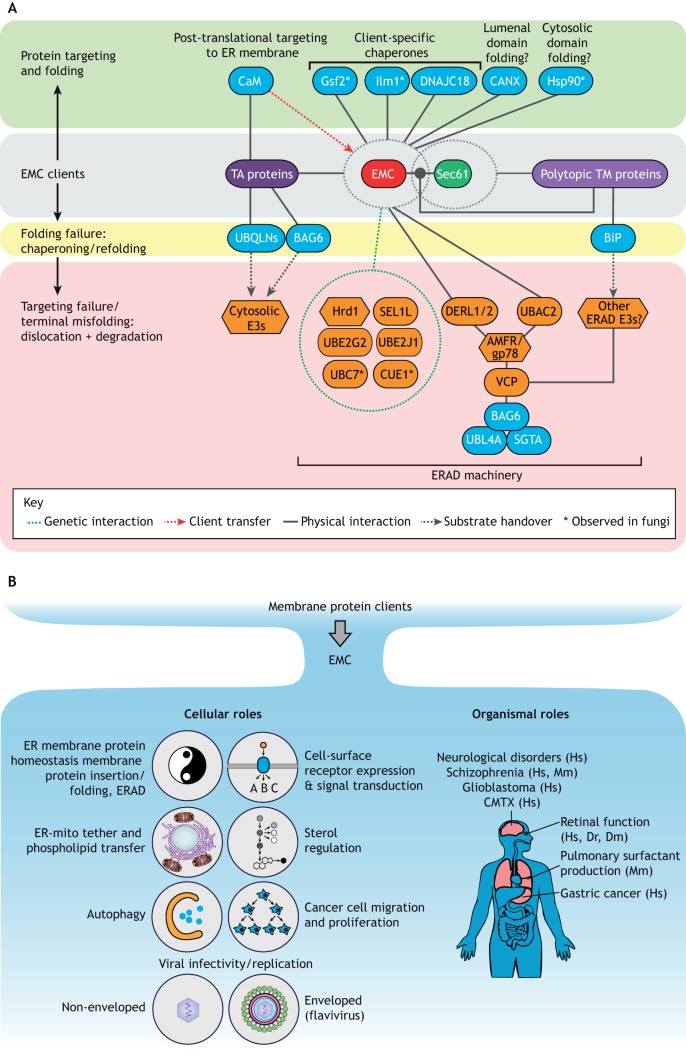Fig. 2.
Client processing by the EMC and its consequences. (A) Triaging between the EMC, Sec61, chaperones and the ERAD machinery. The EMC assists in insertion and folding of membrane proteins within the ER. Although the EMC alone is sufficient for ER membrane insertion of certain tail-anchored (TA) proteins, polytopic proteins are inserted in cooperation with Sec61 (grey background). To fulfil these functions, the EMC–Sec61 module is thought to interact with a variety of targeting and/or folding factors that further assist in membrane protein folding (on green background) and remove terminally misfolded proteins via ERAD or by targeting to cytosolic E3 ubiquitin ligases (on yellow and red backgrounds). Solid lines represent experimentally demonstrated protein–protein interactions. Dashed lines, arrows and circles imply functional links to chaperones or degradation machinery in need of further investigation. Dashed green line and circle indicate genetic interactions. BAG6, large proline-rich protein BAG6; CaM, calmodulin, UBL4A, ubiquitin-like protein 4A; UBQLNs, ubiquilins; VCP, valosin-containing protein. (B) Cellular and organismal roles of the EMC. The EMC exerts a multitude of cellular (left) and organismal functions (right) through its direct or indirect effects on membrane proteins (see Table 1, Boxes 1 and 2). CMTX, Charcot-Marie-Tooth disease; Dm, Drosophila melanogaster; Dr, Danio rerio; Hs, Homo sapiens; Mm, Mus musculus.

